

Very common, painful and annoying…. Neck pain affects one out of ten Australian’s! With that number rising due to increased phone use and prolonged and worsening sitting postures. While it can be painful, a sore neck is not usually cause for concern, and can be managed effectively with some small changes and hands on therapy from a Physiotherapist.
Before we dive into how to ease your neck pain, let’s touch on two of the most common culprits behind a stiff, sore and tight neck;
Forward head posture
Forward head posture (FHP) is a habitual neck posture, most seen in office workers, and those who spend too much time looking down at phones. It is characterised as a poor postural position, with the head translated forward of the shoulder midline, with upper neck hyperextension (see photo).
In this position there is increased compressive forces on the neck joints, as well as increased muscle tension. Pain is the most common outcome, along with headaches, neck discomfort, muscle tension in the neck and shoulders and even pins and needles in the arms and hands.


Ergonomic work setup
The often forgotten, but especially important component to poor neck posture and pain is our work setup. Think about it, you’re spending up to eight hours a day sitting or standing at your desk – so, your set up relative to your head position, eyeline and overall posture is going to play a massive role in regulating your neck pain.
Imaging slouching over for eight hours straight, your lower back would be pretty sore, right? The same rules apply for your upper back, head and neck. That’s why it’s SUPER important, especially during WFH to adjust and adapt your work environment to be as ergonomic as possible. Here a few tips and tricks:
- Give yourself a break! Stand up, roll your shoulders, move your neck every 45mins
- Adjust your monitor to eye level – this prevents excess bending forward (flexion) or back (extension) of your neck to see your screen. Ideally your eyes should point directly at the top 1/3 of the screen.
- If you have two monitors, set them both to eye level, with the most frequently used monitor set up as above
- Adjust your seat height and tilt to a more optimal sitting position – Feet flat with thighs parallel to the ground
Regarding your neck pain, my goals and the goal of any health professional are to:
- Reduce and control pain
- Improve range of motion and functional control
- Strengthen, strengthen, strengthen
- Develop easy and repeatable strategies for you to prevent pain recurrence
While there isn’t one treatment that fits all when it comes to neck pain, here are four of my favourite exercises to try at home.
4 easy exercises to try:
- Trapezius stretch: Sitting up straight in neutral posture, take your chin down to your chest. From there take your left ear towards your left shoulder and rotate your head to the left so your nose is pointing into your left armpit. From there, use your left hand to grab the back of your head and gently pull your head down as able until you feel a stretch in the back of your neck.








2. Head slides/Chin tuck: Stand with the back of your head, shoulders and your bum against a wall. From there slide the back of your head up the wall, giving yourself an epic double chin. Don’t let your head, shoulders or bum come off the wall.
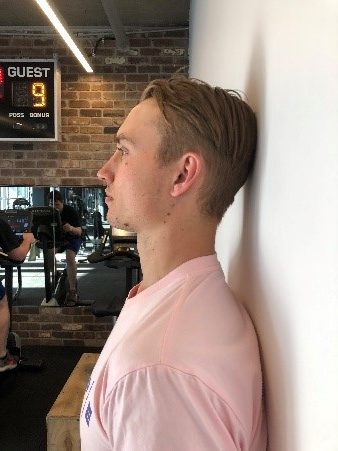

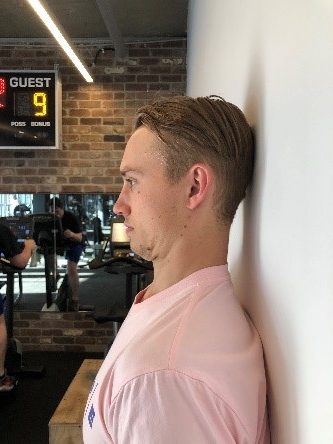

3. Shoulder Squeezes: Standing up straight, gently squeeze your shoulder blades together, hold for 3-5s and release.
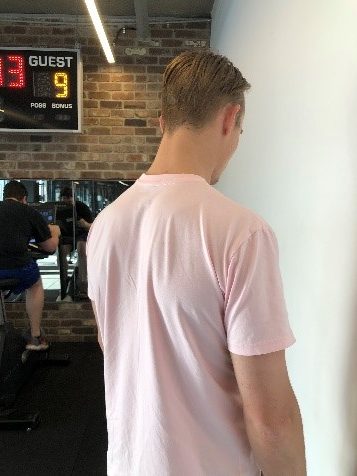

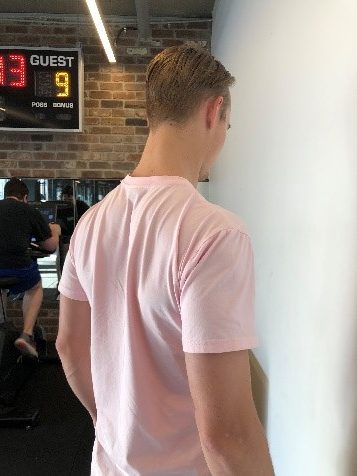

4. Neck range of motion: Start with your head in a neutral position. From there, bring your chin to your chest, hold for 3-5s and then tilt your head back to look at the ceiling. Back at the starting position, rotate your head left to look over your left shoulder, then to the right to look over your right shoulder. Hold both of these for 3-5s each. Finally, starting from neutral, take your left ear down to your left shoulder, then move across to take your right ear to your right shoulder, holding for 3-5s each way.


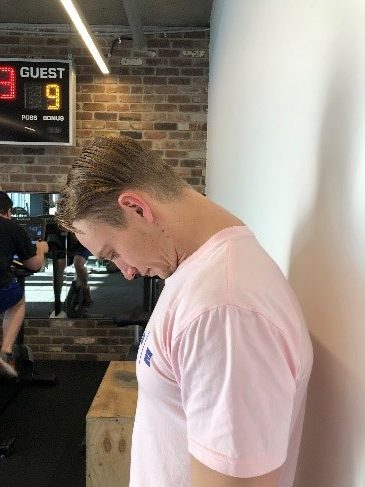



(Please note, if you are having severe neck pain, or experiencing any neurological symptoms, please consult your Doctor or Physiotherapist prior to trying these exercises)
Give these exercises a try 2-3 times per day, find what works for you and note down any changes in your pain levels!
If you think you need more help, I have bookings available for Physiotherapy consultations. Shoot me an email at hugo@pedept.com.au or text me on 0400 892 038 to request a consultation.
Take shape,


Written by Hugo Taemets
Bachelor of Clinical Exercise Physiology (HONS I), Master of Physiotherapy Studies
